Rendering Benchmarks
Here, we are looking at each CPU’s ability to perform rendering and encoding tasks.
Cinebench R20 Multithread

Again, we see results that favor the ASUS Prime X570 in this test. For some reason, the ASUS TUF GAMING X570 PLUS (WI-FI) scores about 800 points less. When overclocked, the ASUS TUF GAMING X570 PLUS (WI-FI) scored 7,429 points in this test.
Cinebench R20 Single Thread
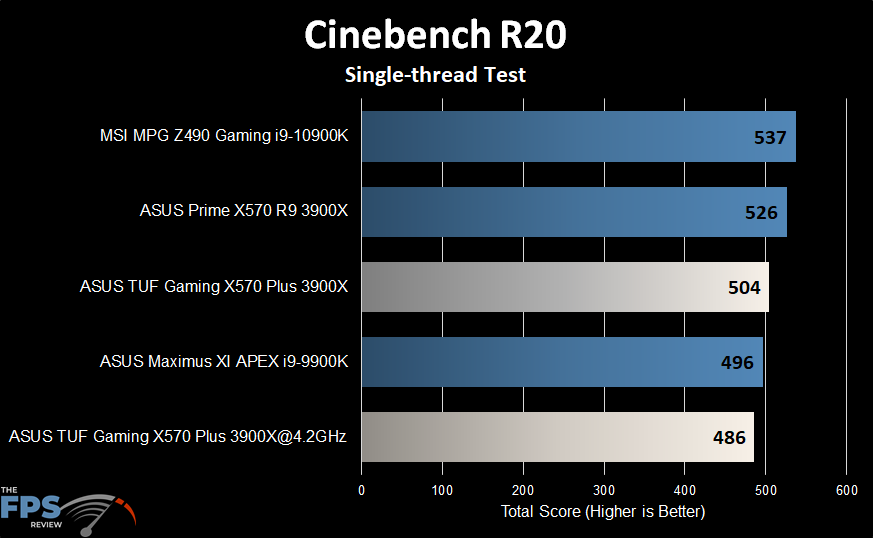
More of the same here. The ASUS TUF GAMING X570 PLUS (WI-FI) falls behind the ASUS Prime X570 once again.
Blender Open Data Benchmark
This is the Blender Open Beta Benchmark version 2.04. This Blender Benchmark allows you to download multiple demos for rendering and render up to six of them in sequence. This can take an extremely long time to run all of them. You also have the option of testing different versions of Blender from the same launcher. We chose two of the tests out of the six, which seemed to have a longer run time than the others.
Blender pavilion_barcelona
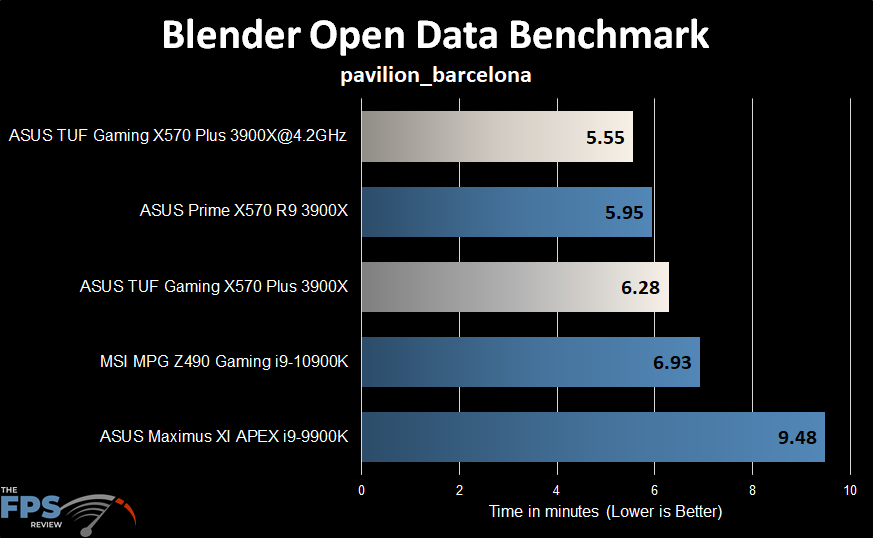
In this test, the ASUS TUF Gaming X570 Plus WiFi completes the test in 6.28 minutes compared to 5.95 minutes on the ASUS Prime X570. Overclocking doesn’t help much here, as the ASUS TUF Gaming X570 Plus WiFi’s 5.55 minute completion time is only slightly better than the ASUS Prime X570’s stock time.
Blender Victor
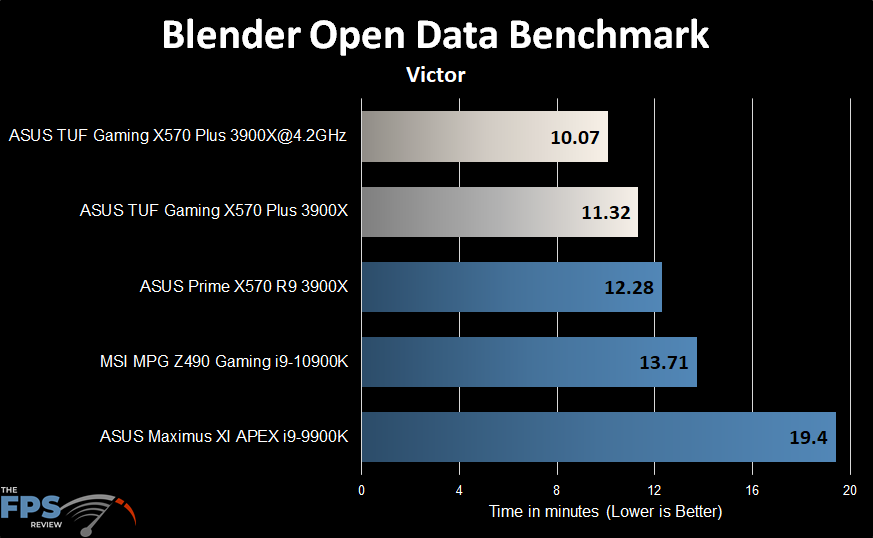
In this test, the ASUS TUF GAMING X570 PLUS (WI-FI) completed the test in 11.32 minutes at stock speed, finally beating the ASUS Prime X570 once again. Overclocked, the time improved coming in over a full minute faster at 10.07 minutes.
V-Ray Benchmark
V-Ray 4.10.07 was used for this test.
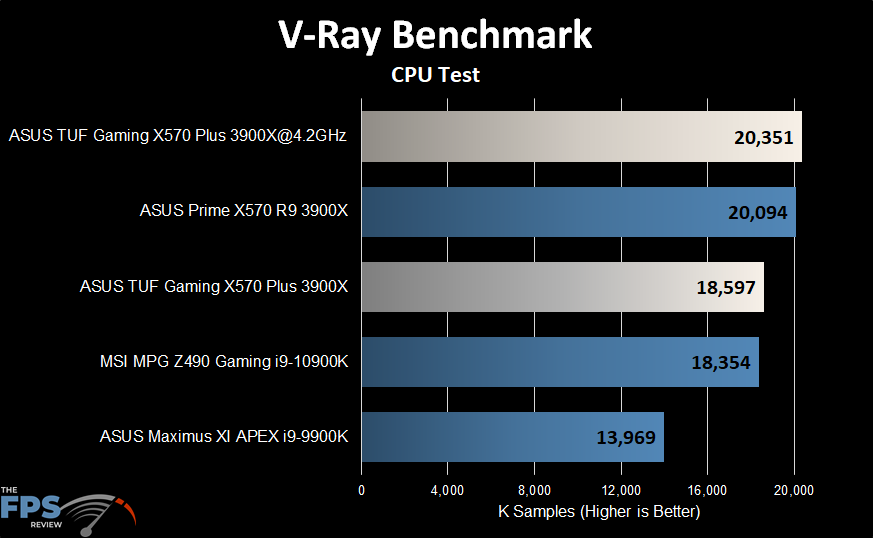
Again, we see somewhat lower than expected results from the ASUS TUF GAMING X570 PLUS (WI-FI). Overclocked, there was a dramatic improvement but it only edged out the ASUS Prime X570. To be fair, overclocking doesn’t normally help that much in this test.
Handbrake
This is an encoding using the 1080P fast 30 preset. The only changes made to the application were disabling of GPU acceleration. The video was a 4K video at 4 minutes and 42 seconds in length.

In the Handbrake test, we saw completion times of 2.62 minutes at stock speeds and 2.55 minutes when overclocked. Once again, the ASUS TUF GAMING X570 PLUS (WI-FI) manages to beat out the ASUS Prime X570.
POV-Ray 3.7
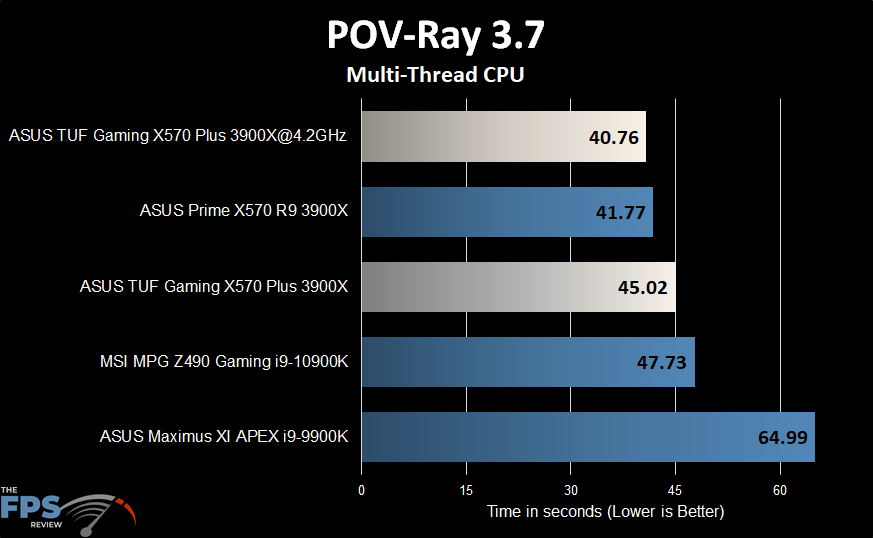
Trading blows once again the ASUS Prime X570 manages to beat the ASUS TUF Gaming X570 Plus WiFi by a little more than 3 seconds. Overclocked, the ASUS TUF GAMING X570 PLUS (WI-FI) completes the test in 40.76 seconds.
Gaming Benchmarks
3DMark 10
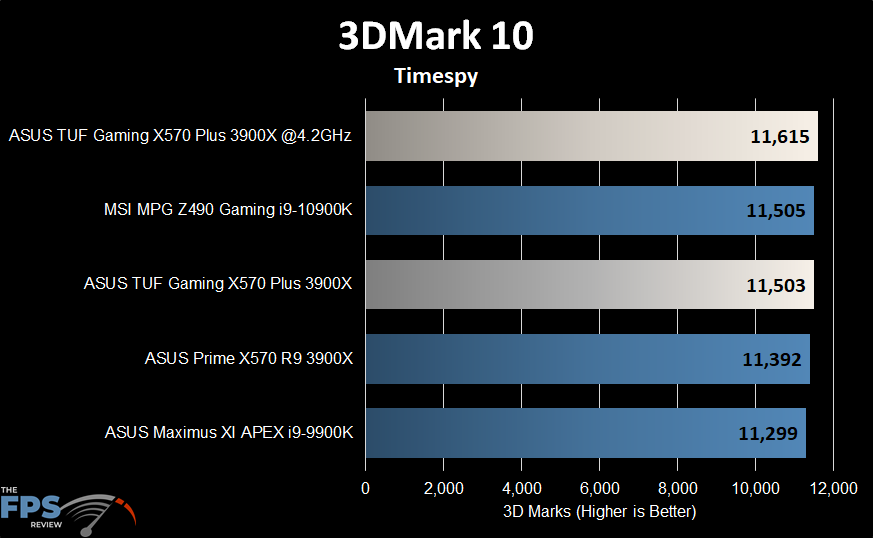
While this is a largely synthetic test, it is a popular one with some comparative value when looking at configurations that are broadly similar. In this test, the ASUS TUF GAMING X570 PLUS (WI-FI) scores a 11,503 at stock speeds and 11,615 3D marks when overclocked.
Destiny 2
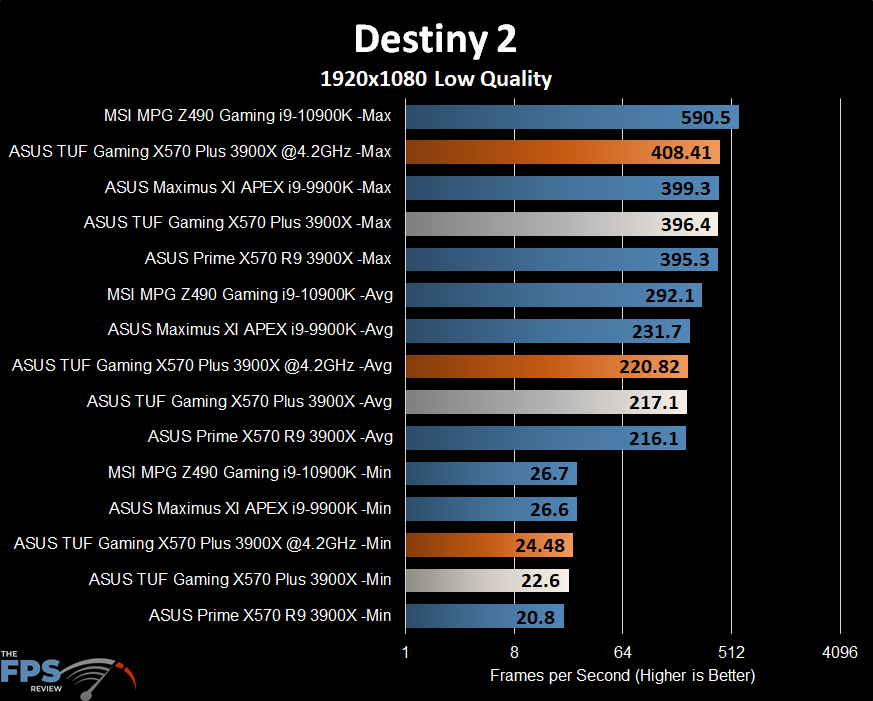
In this test, we see comparable results from the ASUS TUF GAMING X570 PLUS (WI-FI) which are in line with the ASUS Prime X570.
One thing to note is that when Destiny 2 dives into super low frame rates, I suspect its due to transitioning to your own private instance if you aren’t in a group. This transition creates the momentary frame rate drop. I’ve observed this on all the hardware I’ve tested with the game. Indeed, when you play the game on any of this hardware you never see or feel frame rates that low.
That being said, Intel clearly has higher minimums in this game as a general rule. However, when I first started testing this game on AMD hardware, Intel had a much bigger advantage which has shrunk as the game has been patched, the OS improved, and AGESA / firmware fixes have been released.

In this test, we once again see similar results between the ASUS TUF GAMING X570 PLUS (WI-FI) and the ASUS Prime X570. This is of course, what we want to see. Looking at the data, you can see that the RTX 2080 Super isn’t really the best card for 4K gaming in Destiny 2. More than that, we are mostly GPU limited here.
Shadow of the Tomb Raider
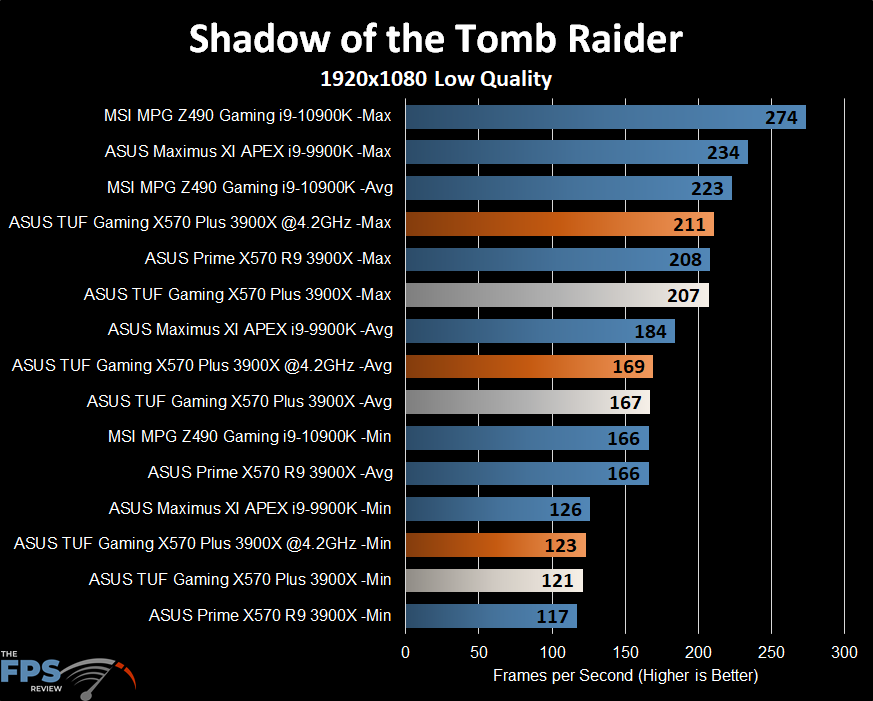
In this test we see better results from the ASUS TUF GAMING X570 PLUS (WI-FI) than we did from the ASUS Prime X570, but only by a small margin. Shadow of the Tomb Raider is a bit strange in that it tends to benefit from higher core counts and all core overclocking.
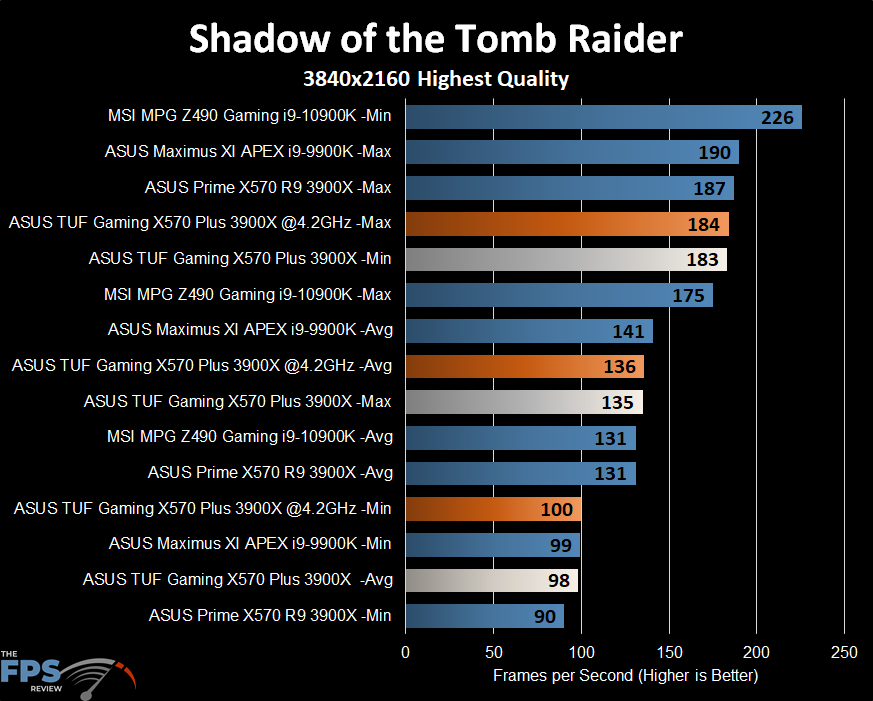
ASUS TUF GAMING X570 PLUS (WI-FI) achieved a relatively low minimum frame rate for some reason. In fact, the average is almost as low as the ASUS Prime X570’s minimum frame rates. Overclocked, this wasn’t the case as the numbers were much better than those of the X570 and most of the other test systems.
Hitman 2
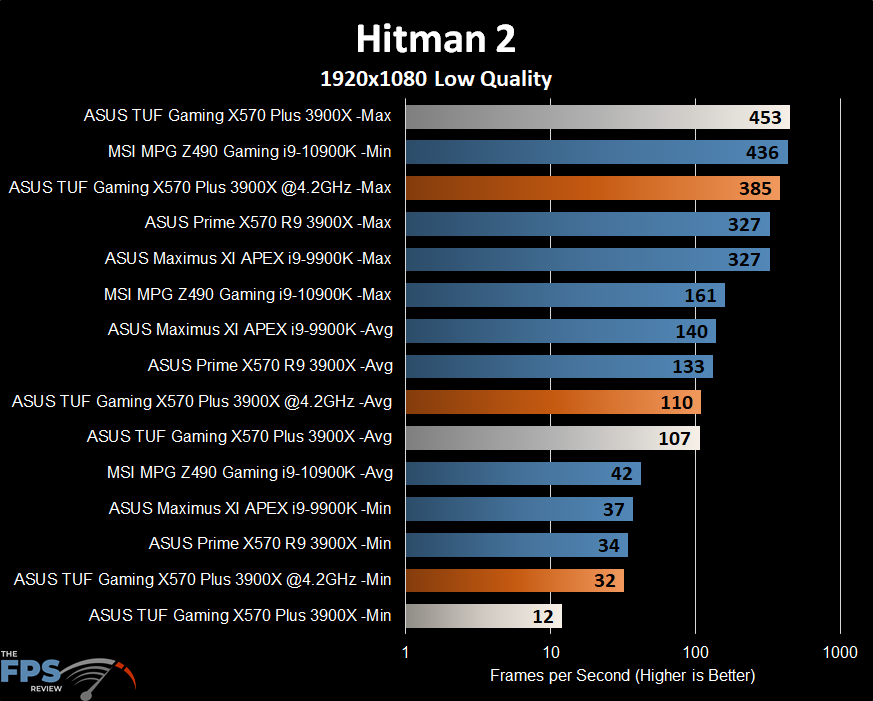
In this test, the average for the ASUS TUF GAMING X570 PLUS (WI-FI) was only 32FPS. This was slightly lower than that of the other test systems. The average results were also slightly lower than the other systems. However, the maximum FPS was the third-best in the roundup.
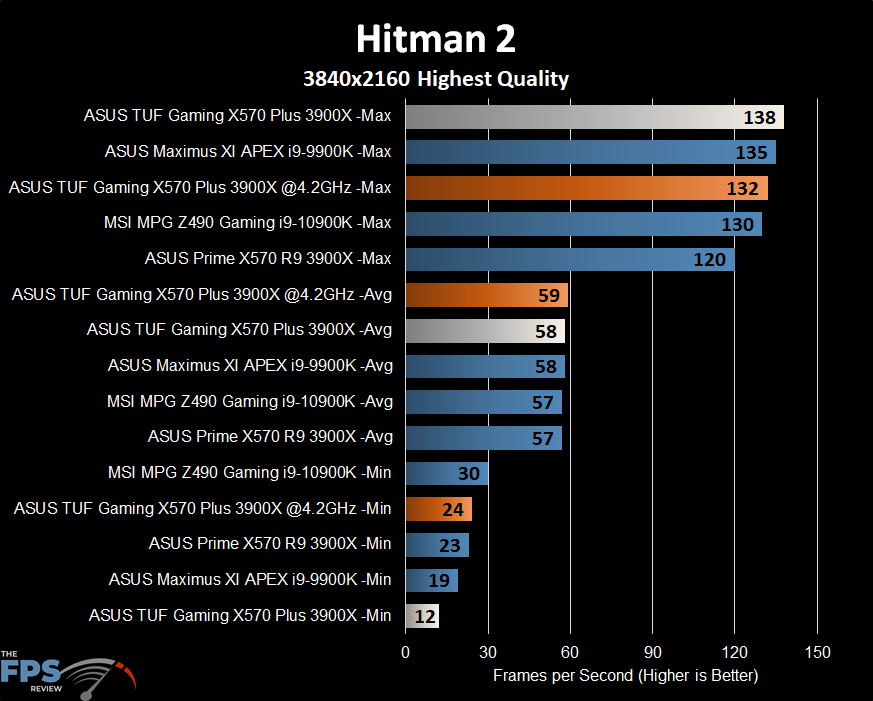
Again, we see a very low minimum frame rate out of the ASUS TUF GAMING X570 PLUS (WI-FI). This may simply be anomalous, as the averages and maximums were at the very top of the range.
Ghost Recon Breakpoint
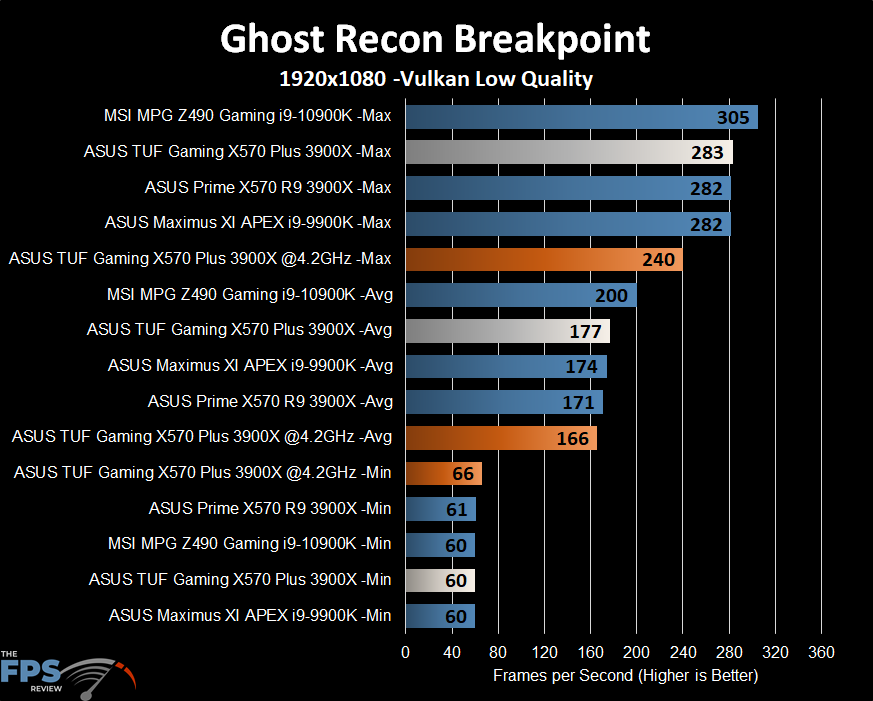
In this test, we see broadly similar results across all of the test systems. There are a couple of cases where the 10900K pulls out way ahead, but for the most part, the results are in the same ranges.
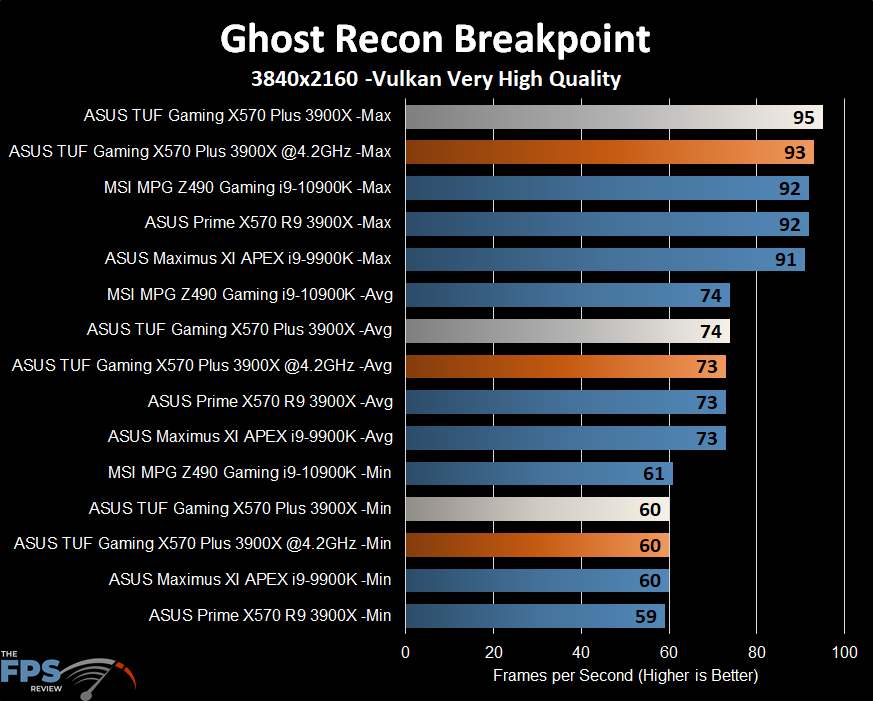
At 4K, Ghost Recon becomes almost entirely GPU limited. Across the entire spectrum of CPU’s, we see a 4 FPS spread from worst to best at most. However, this shows everything is working correctly on our test systems.
